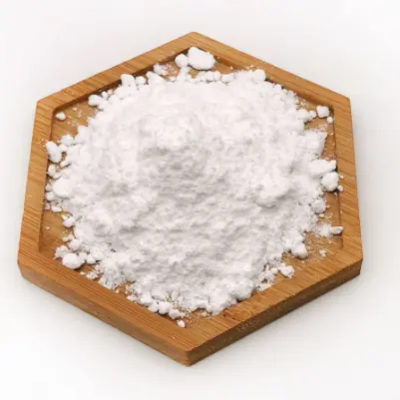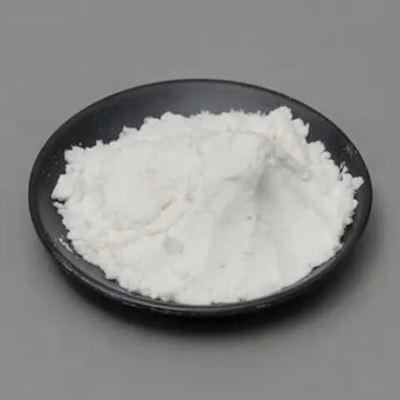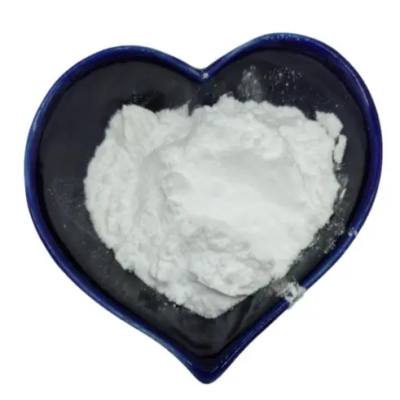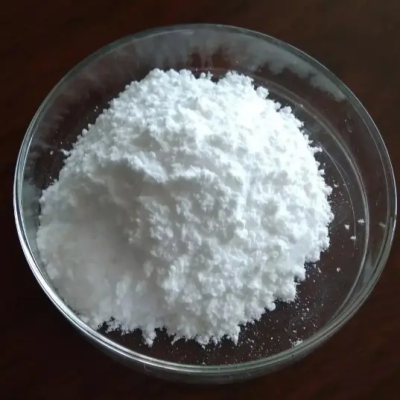-

4-HYDROXYTHIOBENZAMIDE CAS:25984-63-8
4-Hydroxythiobenzamide is a chemical compound with the molecular formula C7H7NO2S. It falls under the category of thioamide derivatives and is characterized by a hydroxy group attached to a benzene ring along with a sulfur atom. This compound holds significance in various fields, including pharmaceuticals, due to its structural attributes and potential applications.
-
![(1R,3R)-9H-PYRIDO[3,4-B]INDOLE-3-CARBOXYLIC ACID, 1,2,3,4-TETRAHYDRO-1-(3,4-METHYLENEDIOXYPH ENYL), METHYL ESTER, HYDROCHLORIDE CAS:171752-68-4](https://cdn.globalso.com/xindaobiotech/1ZNB2ZF342ZWRNG294.png)
(1R,3R)-9H-PYRIDO[3,4-B]INDOLE-3-CARBOXYLIC ACID, 1,2,3,4-TETRAHYDRO-1-(3,4-METHYLENEDIOXYPH ENYL), METHYL ESTER, HYDROCHLORIDE CAS:171752-68-4
(1R,3R)-9H-Pyrido[3,4-b]indole-3-carboxylic Acid, 1,2,3,4-Tetrahydro-1-(3,4-methylenedioxyphenyl), Methyl Ester, Hydrochloride, often referred to in simplified terms for ease of use, is a chemical compound recognized for its complex molecular structure and potential applications in medicinal chemistry. This compound combines a pyridoindole core with a tetrahydrofuran ring fused to a methylenedioxyphenyl group, featuring a methyl ester and hydrochloride salt form, offering significant opportunities for structural diversification and biological investigations.
-

8-Bromo-3-methyl-xanthine CAS:93703-24-3
8-Bromo-3-methyl-xanthine, with the molecular formula C7H7BrN4O2, is a chemical compound classified under xanthine derivatives. It features a xanthine core substituted with bromine at position 8 and a methyl group at position 3. This compound is of significant interest in medicinal chemistry and pharmaceutical research due to its unique structural features and potential applications in drug development.
-

2-(chloromethyl)-4-methylquinazoline CAS:109113-72-6
2-(Chloromethyl)-4-methylquinazoline is a chemical compound belonging to the quinazoline class, characterized by a chloromethyl group at position 2 and a methyl group at position 4 on the quinazoline ring structure. This compound is notable for its pharmacological and synthetic importance in medicinal chemistry. Quinazolines, in general, exhibit diverse biological activities, including anticancer, antimicrobial, and anticonvulsant properties, making them valuable targets for drug discovery efforts.
-

3-Methyl-7-(2-butyn-1-yl)-8-bromoxanthine CAS:666816-98-4
3-Methyl-7-(2-butyn-1-yl)-8-bromoxanthine, with the molecular formula C11H9BrN4O2, is a chemical compound categorized as a xanthine derivative. It features a xanthine core substituted with a bromine atom at position 8, a methyl group at position 3, and a butynyl group at position 7. This compound holds significant interest in medicinal chemistry and pharmaceutical research due to its unique structural modifications and potential applications in drug development.
-

Tetrabenzyl Dapagliflozin CAS:2001088-28-2
Tetrabenzyl dapagliflozin is a chemical compound with the molecular formula C86H92O23S2 and belongs to the class of dapagliflozin derivatives. It is characterized by its structure, where dapagliflozin is substituted with four benzyl groups. This compound is of significant interest in medicinal chemistry and pharmaceutical research due to its unique structural features and potential applications in drug development.
-
![(Z)-Methyl 2-ethoxy-3-((2′-(N’-hydroxycarbaMiMidoyl)biphenyl-4-yl)Methyl)-3H-benzo[d] iMidazole-4-carboxylate CAS:147403-65-4](https://cdn.globalso.com/xindaobiotech/K@NIE7HBAEP6E7J7DS241.png)
(Z)-Methyl 2-ethoxy-3-((2′-(N’-hydroxycarbaMiMidoyl)biphenyl-4-yl)Methyl)-3H-benzo[d] iMidazole-4-carboxylate CAS:147403-65-4
(Z)-Methyl 2-ethoxy-3-((2′-(N’-hydroxycarbamimidoyl)biphenyl-4-yl)methyl)-3H-benzo[d]imidazole-4-carboxylate is synthesized through a series of organic reactions starting from commercially available precursors. The synthesis involves the construction of the benzoimidazole framework followed by the introduction of the biphenylcarbamimidoyl group and the ethoxy-carbonyl functionality. These synthetic steps require precise control over reaction conditions to achieve optimal regioselectivity and yield of the final product.
-
![(2R,3R,4R,5S,6S)-2-(Acetoxymethyl)-6-[4-chloro-3-(4-ethoxybenzyl)phenyl]tetrahydropyran-3,4,5-triyl Triacetate CAS:461432-25-7](https://cdn.globalso.com/xindaobiotech/HSUS81DS80Y35NTEZTU274.png)
(2R,3R,4R,5S,6S)-2-(Acetoxymethyl)-6-[4-chloro-3-(4-ethoxybenzyl)phenyl]tetrahydropyran-3,4,5-triyl Triacetate CAS:461432-25-7
(2R,3R,4R,5S,6S)-2-(Acetoxymethyl)-6-[4-chloro-3-(4-ethoxybenzyl)phenyl]tetrahydropyran-3,4,5-triyl Triacetate, with the molecular formula C24H29ClO8, is a chemical compound classified under tetrahydropyran derivatives. It features a complex structure incorporating a tetrahydropyran ring substituted with an acetoxymethyl group and a phenyl ring bearing chloro and 4-ethoxybenzyl substituents. This compound exhibits intriguing chemical properties that make it valuable in organic synthesis and potentially in pharmaceutical applications.
-

5-CHLOROTHIOPHENE-2-CARBOXYLIC ACID CAS:24065-33-6
5-Chlorothiophene-2-carboxylic Acid, often abbreviated for clarity, is a chemical compound known for its structural complexity and significance in organic synthesis and medicinal chemistry. Combining a thiophene core with a carboxylic acid group at position 2, it offers opportunities for diverse structural modifications and thorough biological investigations.
-

Diethyl 1,3-acetonedicarboxylate CAS:105-50-0
Diethyl 1,3-acetonedicarboxylate is a chemical compound used in organic synthesis and pharmaceutical research. It belongs to the class of acetonedicarboxylate esters, characterized by its diethyl ester structure. This compound is synthesized for its role as a versatile building block in the preparation of pharmaceuticals and complex organic molecules.
-

Strontium ranelate CAS:135459-87-9
Strontium ranelate is a pharmaceutical compound used in the treatment of osteoporosis. It consists of two atoms of strontium bound to one molecule of ranelic acid. Strontium ranelate is known for its dual action, promoting bone formation while inhibiting bone resorption, thus helping to increase bone density and reduce the risk of fractures.
-

Tetraethyl ranelate CAS:58194-26-6
Tetraethyl ranelate is a chemical compound utilized in pharmaceutical research. It belongs to the class of ranelic acid derivatives and is characterized by its tetraethyl structure. This compound is synthesized for its potential pharmacological activities, primarily in the development of new drugs targeting specific biological pathways or receptors.

